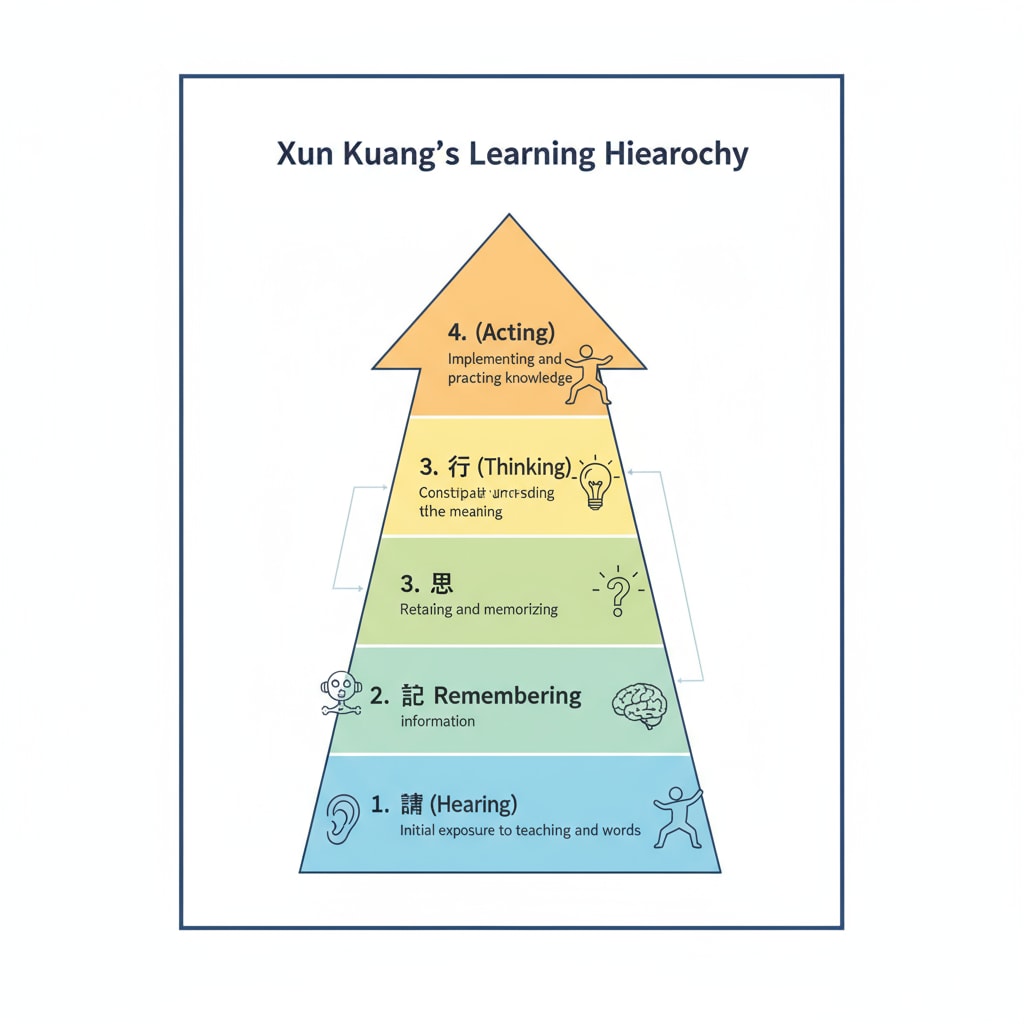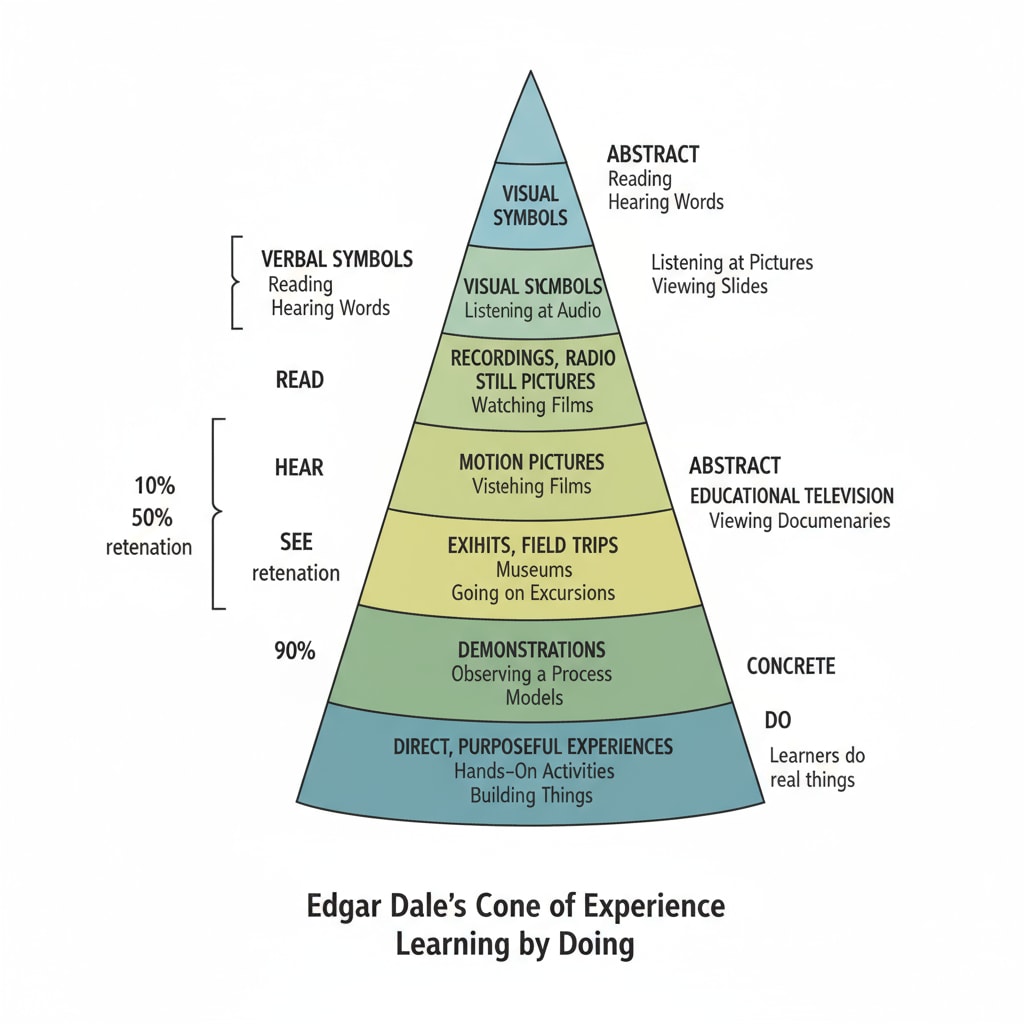Learning theories, the cone of experience, hands-on learning, and multisensory learning have long been subjects of interest in the field of education. Throughout history, scholars and thinkers from different cultures have explored the nature of learning and how we can optimize the process. In this article, we will embark on a journey to compare the ideas of an ancient Chinese philosopher, Xun Kuang (荀子), with those of modern education expert Edgar Dale, and explore the enduring wisdom of “learning by doing.”

The Nature of Learning According to Xun Kuang
Xun Kuang, a prominent Confucian philosopher in ancient China, proposed a theory of learning levels. He believed that learning is not just about acquiring knowledge but also about integrating it into one’s behavior and character. Xun Kuang’s hierarchy of learning starts with “hearing,” followed by “seeing,” then “knowing,” and finally “acting.” According to him, true learning occurs when knowledge is put into practice. For example, one can hear about a moral principle, see how it is applied in real life, understand its significance, but only truly learn it when they act in accordance with it. This concept emphasizes the importance of hands-on experience in the learning process. Xun Kuang on Wikipedia
Edgar Dale’s Cone of Experience
Fast forward to the modern era, Edgar Dale introduced the Cone of Experience theory. Dale’s cone categorizes different types of learning experiences based on their degree of abstraction and the amount of active participation required. At the base of the cone are the most concrete and engaging experiences, such as direct purposeful experiences and demonstrations. As we move up the cone, the experiences become more abstract, like listening to a lecture or reading. Dale’s research suggested that people retain more information from hands-on and multi-sensory experiences. For instance, when students engage in experiments or real-life projects, they are more likely to remember and understand the concepts. Cone of Experience on Britannica

The Power of “Learning by Doing”
Both Xun Kuang’s and Dale’s theories converge on the idea that “learning by doing” is a highly effective way of learning. When we engage in hands-on activities, we are not only using our cognitive abilities but also our physical senses. This multi-sensory engagement enhances our understanding and retention of knowledge. For example, in a science class, performing an experiment allows students to see, touch, and measure, which creates a more vivid and lasting memory compared to just reading about it in a textbook. This hands-on approach also promotes critical thinking and problem-solving skills as learners are actively involved in the process.
Multisensory Learning in the Digital Age
In today’s digital age, technology has opened up new possibilities for multi-sensory learning. Virtual reality (VR) and augmented reality (AR) are becoming increasingly popular in education. These technologies allow students to immerse themselves in realistic environments, providing a high level of engagement. For example, VR can be used to take students on virtual field trips to historical sites or to explore the human body in detail. This not only makes learning more fun but also more effective by engaging multiple senses. Additionally, educational apps and online platforms often incorporate multimedia elements such as videos, audio, and interactive games to enhance the learning experience.
In conclusion, the concept of “learning by doing” has withstood the test of time and culture. Whether in ancient China with Xun Kuang or in modern education with Edgar Dale, the importance of hands-on, multi-sensory learning experiences has been recognized. As we continue to develop new educational technologies, we should strive to incorporate these principles to create more effective learning environments. By embracing the wisdom of “learning by doing,” we can help learners of all ages unlock their full potential.
Readability guidance: This article uses short paragraphs and lists to summarize key points. Each H2 section provides a clear focus. The proportion of passive voice and long sentences is controlled, and transition words are used throughout to enhance readability.


